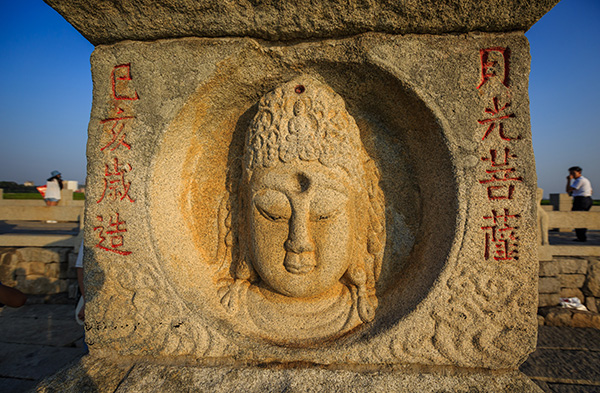 |
|
A Buddhist statue on a stone structure at Luoyang Bridge, a Maritime Silk Road heritage site in Quanzhou.[Photo provided to China Daily] |
Jing Feng, chief of the Asia and the Pacific Unit at UNESCO's World Heritage Centre, said in a previous interview with the China News Service that UNESCO has been actively promoting intercultural dialogue as one of its core missions, and it's actively supporting and participating in the CDAC.
He says cooperation in world-heritage preservation provides the CDAC with a good starting point to better present its role as an exchange platform.
Lyu is the director of Tsinghua's National Heritage Center and vice-president of the Chinese National Committee for the International Council on Monuments and Sites.
In December, he was elected as one of two co-chairs of the intergovernmental coordinating committee on the serial transnational world heritage nomination of the Silk Roads.
The committee, founded in 2009, promotes coordination and cooperation around the protection and management of heritage in 14 countries along the ancient route in recent years.
In 2014, Silk Roads: The Routes Network of the Chang'an-Tianshan Corridor, which spans 5,000 kilometers from Central China to Central Asia, became UNESCO's first transnational world-heritage site supported by a joint application by China, Kazakhstan and Kyrgyzstan.